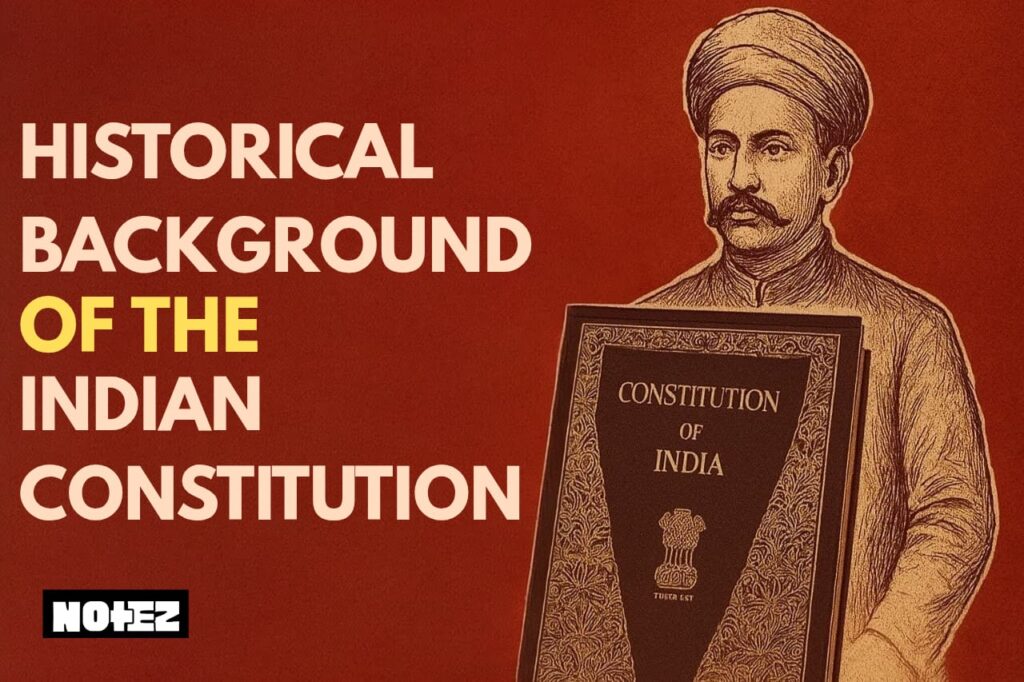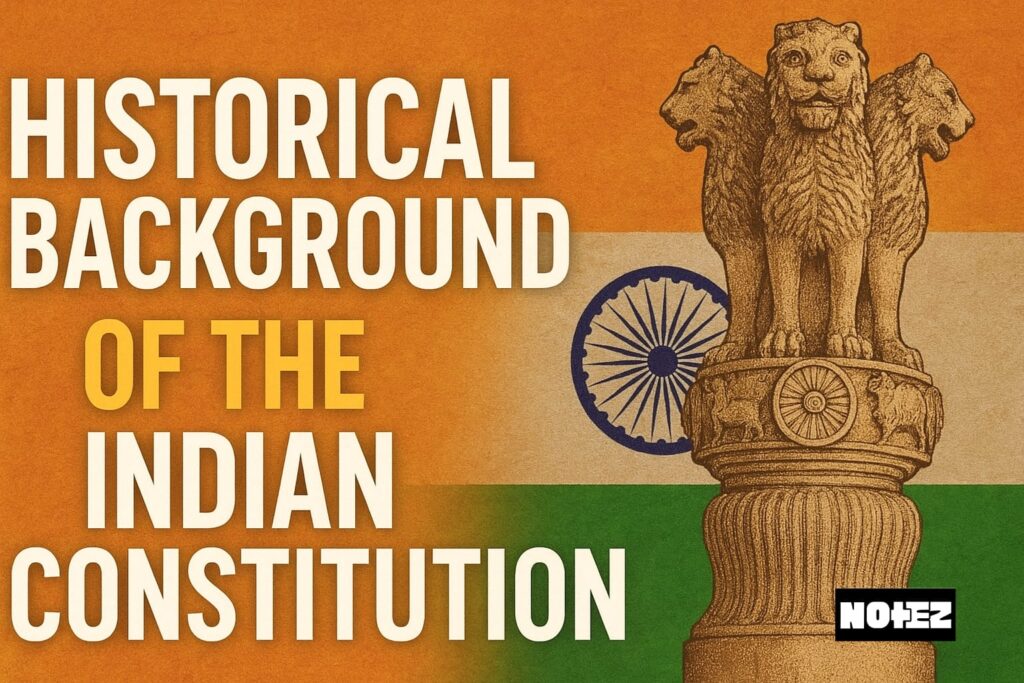The making of the Indian Constitution is one of the most important topics in UPSC Polity and Governance. It not only provides insights into how modern India was shaped but also reflects the values, struggles, and aspirations of our freedom movement. For every UPSC aspirant, understanding the constitution making process in India is essential, as it builds the foundation for interpreting various provisions of the Constitution.
—
📜 Historical Background
Before the Constitution was drafted, India had a long history of constitutional reforms under British rule:
Regulating Act, 1773 – First step towards parliamentary control.
Pitt’s India Act, 1784 – Strengthened British control over governance.
Charter Acts (1833, 1853) – Laid foundations of legislative institutions.
Government of India Act, 1858 – Ended Company rule after the Revolt of 1857.
Indian Councils Acts (1861, 1892, 1909) – Expanded Indian participation in governance.
Government of India Acts (1919, 1935) – Introduced dyarchy and provincial autonomy.
Finally, the Indian Independence Act, 1947 paved the way for a sovereign Constituent Assembly, entrusted with framing the Constitution of free India.
—
👥 Constituent Assembly of India
The Constituent Assembly was the body that drafted the Constitution.
It was formed in December 1946, based on the Cabinet Mission Plan (1946).
Total Members: 389 (later reduced to 299 after Partition).
Members were indirectly elected by the provincial legislative assemblies and nominated from princely states.
Dr. Rajendra Prasad was elected as the President of the Assembly.
Dr. B.R. Ambedkar was the Chairman of the Drafting Committee and is remembered as the Chief Architect of the Indian Constitution.
—
📑 Important Committees of the Constituent Assembly
Several committees worked on different aspects of the Constitution. Some key ones were:
Drafting Committee – Chaired by Dr. B.R. Ambedkar.
Union Powers Committee – Chaired by Jawaharlal Nehru.
Union Constitution Committee – Chaired by Jawaharlal Nehru.
Provincial Constitution Committee – Chaired by Sardar Vallabhbhai Patel.
Advisory Committee on Fundamental Rights & Minorities – Chaired by Sardar Vallabhbhai Patel.
These committees submitted reports which were debated, modified, and finally adopted in the Assembly.
—
📜 The Objective Resolution
One of the most defining moments was the presentation of the Objective Resolution by Jawaharlal Nehru in December 1946.
It laid down the philosophy and guiding principles of the Constitution:
India shall be an independent sovereign republic.
It shall guarantee social, economic, and political justice to all citizens.
It shall ensure freedom, equality, and fraternity.
This resolution later became the Preamble of the Indian Constitution.
—
🏛️ Drafting of the Constitution
The Drafting Committee completed its work in less than 3 years (2 years, 11 months, 18 days).
The Assembly held 11 sessions and discussed every provision in detail.
Around 7,635 amendments were proposed, of which nearly 2,500 were accepted.
The final draft was adopted on 26 November 1949, celebrated as Constitution Day (Samvidhan Diwas).
The Constitution came into force on 26 January 1950, chosen to honor the 1930 Purna Swaraj Declaration.
—
📌 Salient Features of the Constitution
The making of the Constitution ensured that India’s supreme law reflected both Indian realities and global constitutional principles. Some key features include:
World’s lengthiest written Constitution.
Blend of rigidity and flexibility.
Parliamentary system borrowed from Britain.
Fundamental Rights & Directive Principles inspired by US & Irish Constitutions.
Federal structure with unitary bias.
Independent Judiciary with the power of judicial review.
—
📖 Importance for UPSC
For UPSC Prelims, questions are often asked about:
Committees of the Constituent Assembly.
Date of adoption & enforcement.
Role of leaders like Nehru, Ambedkar, Patel, Prasad.
Historical Acts leading to Constitution-making.
For UPSC Mains (GS Paper-II), aspirants must critically analyze:
Democratic vision of the framers.
Challenges during constitution-making.
Relevance of Objective Resolution.
Comparative features with other Constitutions.
—
✅ Conclusion
The making of the Indian Constitution was not just a legal exercise but a political, social, and moral vision of India’s founding fathers. It embodies the struggles of the freedom movement, the ideals of justice, liberty, equality, and fraternity, and a deep commitment to building a united yet diverse nation.
For UPSC aspirants, mastering this topic ensures clarity not only about polity basics but also about the philosophy of governance in India.


